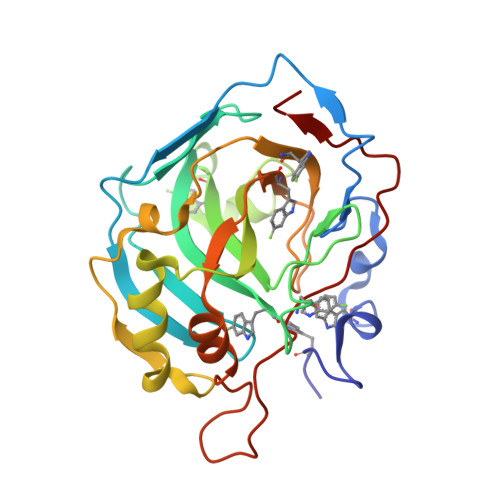Direct Expression of Fluorinated Proteins in Human Cells for 19 F In-Cell NMR Spectroscopy.
Pham, L.B.T., Costantino, A., Barbieri, L., Calderone, V., Luchinat, E., Banci, L.(2023) J Am Chem Soc 145: 1389-1399
- PubMed: 36604341
- DOI: https://doi.org/10.1021/jacs.2c12086
- Primary Citation of Related Structures:
8B29 - PubMed Abstract:
In-cell NMR spectroscopy is a powerful approach to study protein structure and function in the native cellular environment. It provides precious insights into the folding, maturation, interactions, and ligand binding of important pharmacological targets directly in human cells. However, its widespread application is hampered by the fact that soluble globular proteins often interact with large cellular components, causing severe line broadening in conventional heteronuclear NMR experiments. 19 F NMR can overcome this issue, as fluorine atoms incorporated in proteins can be detected by simple background-free 1D NMR spectra. Here, we show that fluorinated amino acids can be easily incorporated in proteins expressed in human cells by employing a medium switch strategy. This straightforward approach allows the incorporation of different fluorinated amino acids in the protein of interest, reaching fluorination efficiencies up to 60%, as confirmed by mass spectrometry and X-ray crystallography. The versatility of the approach is shown by performing 19 F in-cell NMR on several proteins, including those that would otherwise be invisible by 1 H- 15 N in-cell NMR. We apply the approach to observe the interaction between an intracellular target, carbonic anhydrase 2, and its inhibitors, and to investigate how the formation of a complex between superoxide dismutase 1 and its chaperone CCS modulates the interaction of the chaperone subunit with the cellular environment.
- CERM─Magnetic Resonance Center, Università degli Studi di Firenze, Via Luigi Sacconi 6, 50019Sesto Fiorentino, Italy.
Organizational Affiliation:


















